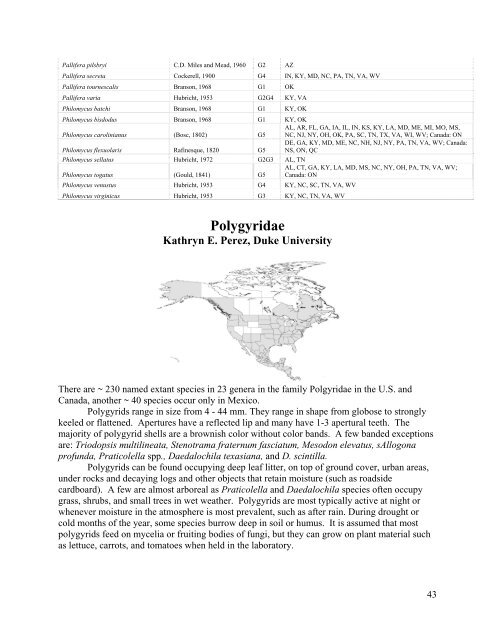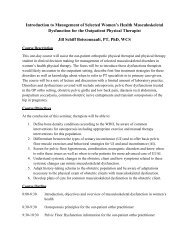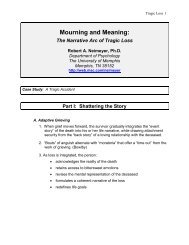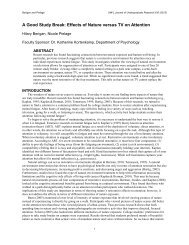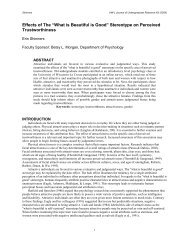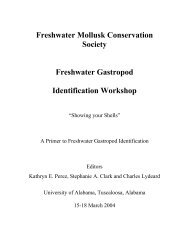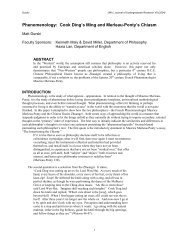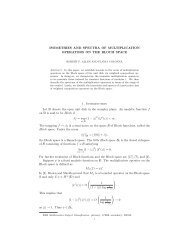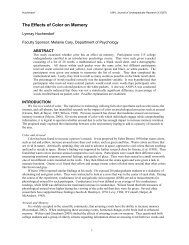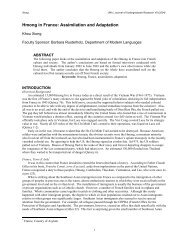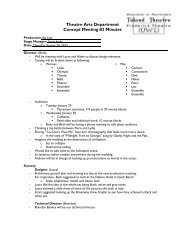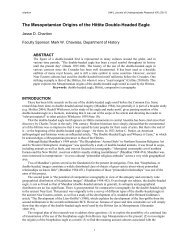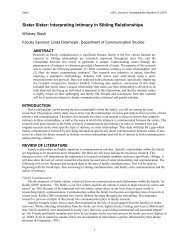A Guide for Terrestrial Gastropod Identification - University of ...
A Guide for Terrestrial Gastropod Identification - University of ...
A Guide for Terrestrial Gastropod Identification - University of ...
Create successful ePaper yourself
Turn your PDF publications into a flip-book with our unique Google optimized e-Paper software.
Pallifera pilsbryi C.D. Miles and Mead, 1960 G2 AZ<br />
Pallifera secreta Cockerell, 1900 G4 IN, KY, MD, NC, PA, TN, VA, WV<br />
Pallifera tournescalis Branson, 1968 G1 OK<br />
Pallifera varia Hubricht, 1953 G2G4 KY, VA<br />
Philomycus batchi Branson, 1968 G1 KY, OK<br />
Philomycus bisdodus Branson, 1968 G1 KY, OK<br />
AL, AR, FL, GA, IA, IL, IN, KS, KY, LA, MD, ME, MI, MO, MS,<br />
Philomycus carolinianus (Bosc, 1802) G5 NC, NJ, NY, OH, OK, PA, SC, TN, TX, VA, WI, WV; Canada: ON<br />
DE, GA, KY, MD, ME, NC, NH, NJ, NY, PA, TN, VA, WV; Canada:<br />
Philomycus flexuolaris Rafinesque, 1820 G5 NS, ON, QC<br />
Philomycus sellatus Hubricht, 1972 G2G3 AL, TN<br />
AL, CT, GA, KY, LA, MD, MS, NC, NY, OH, PA, TN, VA, WV;<br />
Philomycus togatus (Gould, 1841) G5 Canada: ON<br />
Philomycus venustus Hubricht, 1953 G4 KY, NC, SC, TN, VA, WV<br />
Philomycus virginicus Hubricht, 1953 G3 KY, NC, TN, VA, WV<br />
Polygyridae<br />
Kathryn E. Perez, Duke <strong>University</strong><br />
There are ~ 230 named extant species in 23 genera in the family Polgyridae in the U.S. and<br />
Canada, another ~ 40 species occur only in Mexico.<br />
Polygyrids range in size from 4 - 44 mm. They range in shape from globose to strongly<br />
keeled or flattened. Apertures have a reflected lip and many have 1-3 apertural teeth. The<br />
majority <strong>of</strong> polygyrid shells are a brownish color without color bands. A few banded exceptions<br />
are: Triodopsis multilineata, Stenotrama fraternum fasciatum, Mesodon elevatus, sAllogona<br />
pr<strong>of</strong>unda, Praticolella spp., Daedalochila texasiana, and D. scintilla.<br />
Polygyrids can be found occupying deep leaf litter, on top <strong>of</strong> ground cover, urban areas,<br />
under rocks and decaying logs and other objects that retain moisture (such as roadside<br />
cardboard). A few are almost arboreal as Praticolella and Daedalochila species <strong>of</strong>ten occupy<br />
grass, shrubs, and small trees in wet weather. Polygyrids are most typically active at night or<br />
whenever moisture in the atmosphere is most prevalent, such as after rain. During drought or<br />
cold months <strong>of</strong> the year, some species burrow deep in soil or humus. It is assumed that most<br />
polygyrids feed on mycelia or fruiting bodies <strong>of</strong> fungi, but they can grow on plant material such<br />
as lettuce, carrots, and tomatoes when held in the laboratory.<br />
43


